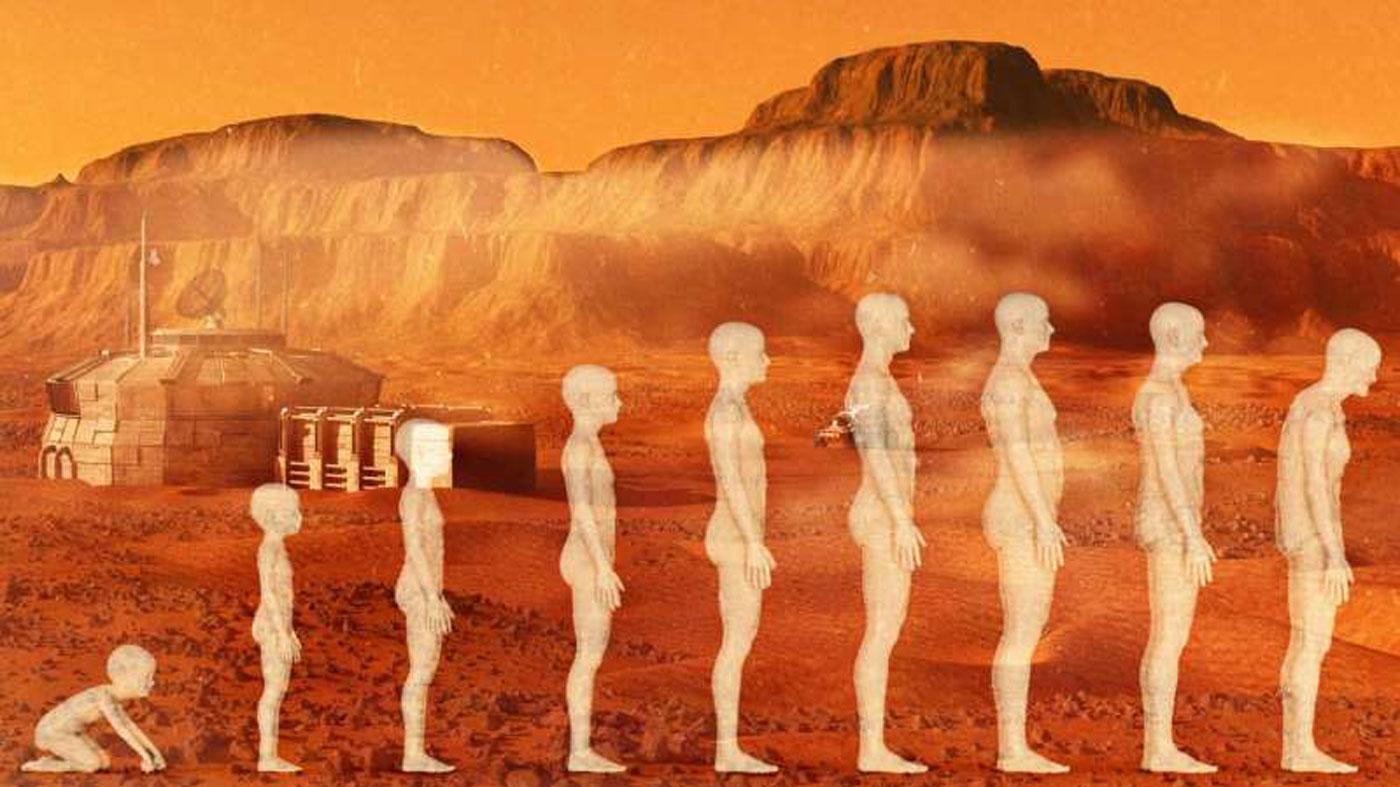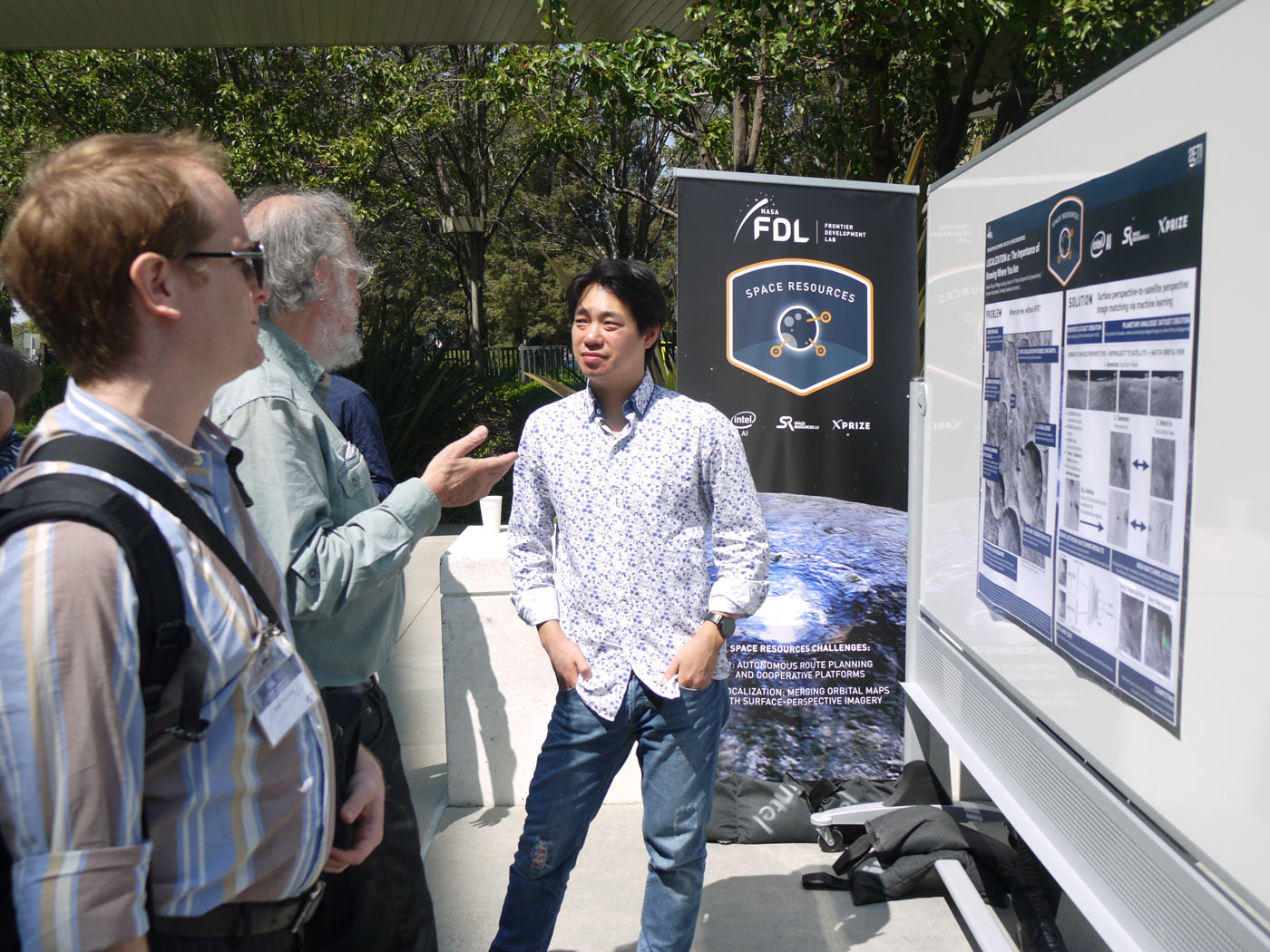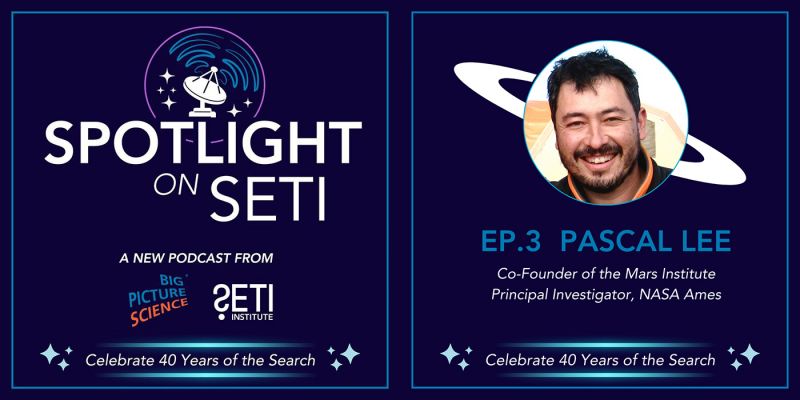
Researchers and the public are increasingly tantalized by the possibility that life, or at least evidence of past life, might be detected on Mars. A number of discoveries announced in recent months – perhaps most notably the evidence of a possible large reservoir of liquid water underneath the surface of Mars – have raised hopes, despite the fact that Mars is anything but hospitable today. This wasn’t always the case according to Nathalie Cabrol, Director of the Carl Sagan Center for the Study of Life in the Universe at the SETI Institute, as quoted in a recent article by MSN:
“There’s not a consensus, but there’s a general expectation [ancient] Mars must have been looking like a good summer Arctic day,” Nathalie Cabrol, a NASA astrobiologist who is extensively involved with the search for signs of extraterrestrials on Mars, told The Daily Beast.
For life to exist, “you need energy, you need water, you need nutrients, and you need a shelter, and you have all of these on an early Mars. If you want a time where life could have started, early Mars would have been the time.”
Today, with a thin atmosphere, extreme temperatures, and a weak magnetic field leaving the surface exposed to high levels of radiation, Mars is not a friendly place for life to survive or evolve. Still, as Cabrol points out, one cannot rule out the unexpected:
“At this point there’s no way we can definitively say life can or cannot evolve on Mars,” said Cabrol. “Whenever you think you have figured it out, life finds a way to surprise you and be in places you would not expect it to be.”
Time – and further exploration and research by scientists, like Dr. Cabrol and others at the SETI Institute – will tell.
 Lost on the Moon? There Might Be an App for That Soon!
Lost on the Moon? There Might Be an App for That Soon!Frontier Development Lab (FDL), an applied artificial intelligence research accelerator enabled by partnership between NASA, the SETI Institute, and private sector partners, uses AI and machine learning to tackle challenges of space research and exploration. 2018’s FDL recently wrapped up its summer session and produced some exciting results in the area of space resources, focusing Lunar exploration, navigation, and base-building. Several outlets, including Futurism and Geek.com, covered the an FDL team that produced a virtual moon by using millions of images of the moon’s surface. By effectively teaching AI what the moon “looks like”, they were able to show that a theoretical explorer could navigate by taking pictures of the surrounding landscape and compare the images with the simulated Lunar surface.
In addition to addressing challenges in the area space resources, FDL 2018 teams worked on problems in the areas of astrobiology, exoplanets, and space weather.
You can watch the entire NASA Frontier Development Lab (FDL)* Event Horizon 2018: AI+Space Challenge Review Event here, and you can learn more about this and past Frontier Development Labs on our website, SETI.org.
- Intel: Intel Hosts NASA Frontier Development Lab Demo Day for 2018 Research Presentations
- Geek.com: NASA Lab Develops Space-Based AI That Gives Directions
- Outer Places: Recalculating...NASA Developing GPS for Space Using Artificial Intelligence
- Futurism: NASA Is Making an AI-Based GPS for Space
- DZone: Lost in Space? NASA Has a Plan Using AI
 Quiet: Green Bank Observatory and the Town Without Wifi
Quiet: Green Bank Observatory and the Town Without WifiProject Ozma, started in 1960 by a young Cornell University astronomer, was a groundbreaking SETI experiment attempting to detect life on distant worlds through interstellar radio waves. That astronomer was Frank Drake, Chair Emeritus of the SETI Institute’s Board of Trustees and creator of the eponymous Drake Equation. Project Ozma took place at the National Radio Astronomy Observatory at Green Bank, West Virginia, a town indelibly marked by federally-mandated restrictions on the use of airwaves in the region. National Geographic explored the Appalachian valley through photographers Andrew Phelps and Paul Kranzler's recently published book - fittingly called the Drake Equation – which captures the mismatch of the of the advanced technology of the facility with the nearby low-tech, semi-rural town.
- National Geographic: To Study the Stars, This Town Went Off the Grid
 Asteroid or Probe? New Paper on Observations of ‘Oumuamua
Asteroid or Probe? New Paper on Observations of ‘Oumuamua‘Oumuamua, the interstellar object detected in October of 2017 that passed through the Solar System, was surprising in a number of ways. Besides its distinction as the first object known to originate from another star system, it had a peculiar, cigar-like shape and relatively small size, and unexpectedly lacked a comet tail. ‘Omuamua’s unusual properties prompted researchers to consider that it was at least possible that it was an interstellar probe, and so a team at the SETI Institute investigated. SpaceRef posted a brief description of a recently published study by SETI Institute scientists, including research scientist Jon Richards, senior research scientist Peter Jenniskens, senior astronomer Seth Shostak, and the SETI Institute’s co-founder and Chair Emeritus for SETI Research, Jill Tarter. As the authors put it in the introduction to their paper:
While a non-natural origin for ‘Oumuamua is unlikely, that would be a poor reason for dismissing the idea entirely. Little will be learned if the truth is assumed a priori.
Using the Allen Telescope Array, the object was studied over the course of eight days. While no evidence of an artificial signal was detected, the experiment holds value as a prototype for the study of such objects in the future.
Big Picture Science
In last week’s episode, find higher ground while you listen to the science of rising sea levels in New Water Worlds. On our previous week’s episode, physics is the focus, from gravitational waves to string theory, in Too Big to Prove.
On our previous episode of Facebook Live, SETI Institute CEO Bill Diamond spoke with the 2018 Research Experience for Undergraduate (REU) students as they prepared for their final presentations of the summer. Videos of all past Facebook Live events can be found on our Facebook page: https://www.facebook.com/SETIInstitute/
- Our Journey Towards Mars: September 10, San Francisco, CA: SETI Institute scientist JR Skok will speak at the California Academy of Sciences
- Astronomical Society of the Pacific Annual Meeting: September 10-13, Rohnert Park, CA Molly Bentley, co-host of Big Picture Science, will participate in a panel discussion
- SETI Talks: September 13, Menlo Park, CA Human Exploration to Mars – Becoming Interplanetary Dava Newman, SETI Institute trustee and former Deputy Director of NASA will be joined by Nathalie Cabrol, Director of the Carl Sagan Center at the SETI Institute, Jennifer Heldmann at NASA Ames Research Center, and Jaya Bajpayee, Deputy Director of Science at NASA Ames Research Center
- Astronomy Night: Searching for Aliens, Finding Ourselves: September 15, Mill Valley, CA Jill Tarter is the featured speaker
- XVIth Hvar Astrophysical Colloquium: September 24-28, Hvar, Croatia Meng Jin, SETI Institute Research Scientist will be one of the invited speakers; his presentation is "Sun-to-Earth Modeling of CMEs with a Global MHD Model: Facilitating Physical Understanding and Space Weather Forecasting."
- Institute of Geophysics and Planetary Physics: September 28, Santa Cruz, CA SETI Institute scientist JR Skok will give a talk about the search for life in the Martian Hot Springs
- The World Above the Tetons Science Speaker Series: September 29, Teton Village, WY Jill Tarter will present Communicating Beyond Earth
- International Astronautical Conference: October 1-5, Bremen, Germany John Rummel, Senior Scientist at the SETI Institute will be chairing a session
- Maria Mitchell Women in Science Symposium: October 5-6, Wellesley, MA Jill Tarter will be a keynote speaker
- Wired 25th Anniversary Festival: October 12-15, San Francisco, CA Jill Tarter, co-founder of the SETI Institute, will take part in the festival and present "The 21st Century: The Century of Biology on Earth and Beyond."
- Fermilab Arts and Lecture Series: October 12, Batavia, IL Jill Tarter, SETI pioneer and Chair Emeritus for SETI Research at the SETI Institute will present
- Kepler, K2, TESS and Beyond: October 24, Bremerton, WA Jeff Coughlin, SETI Institute scientist and Director of the K2 Science Office, will giving a public talk at Olympic College in Bremerton, WA.





